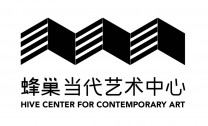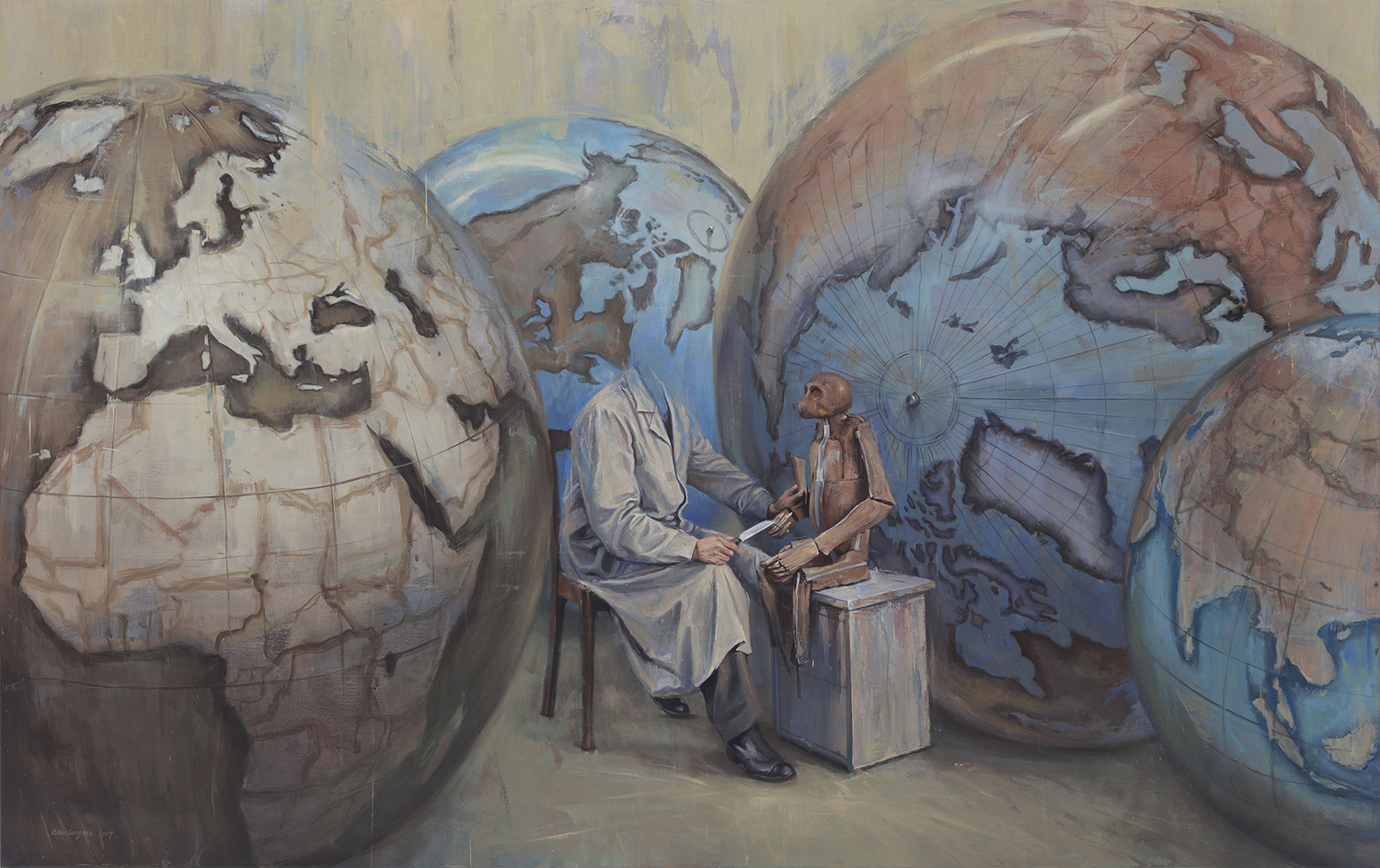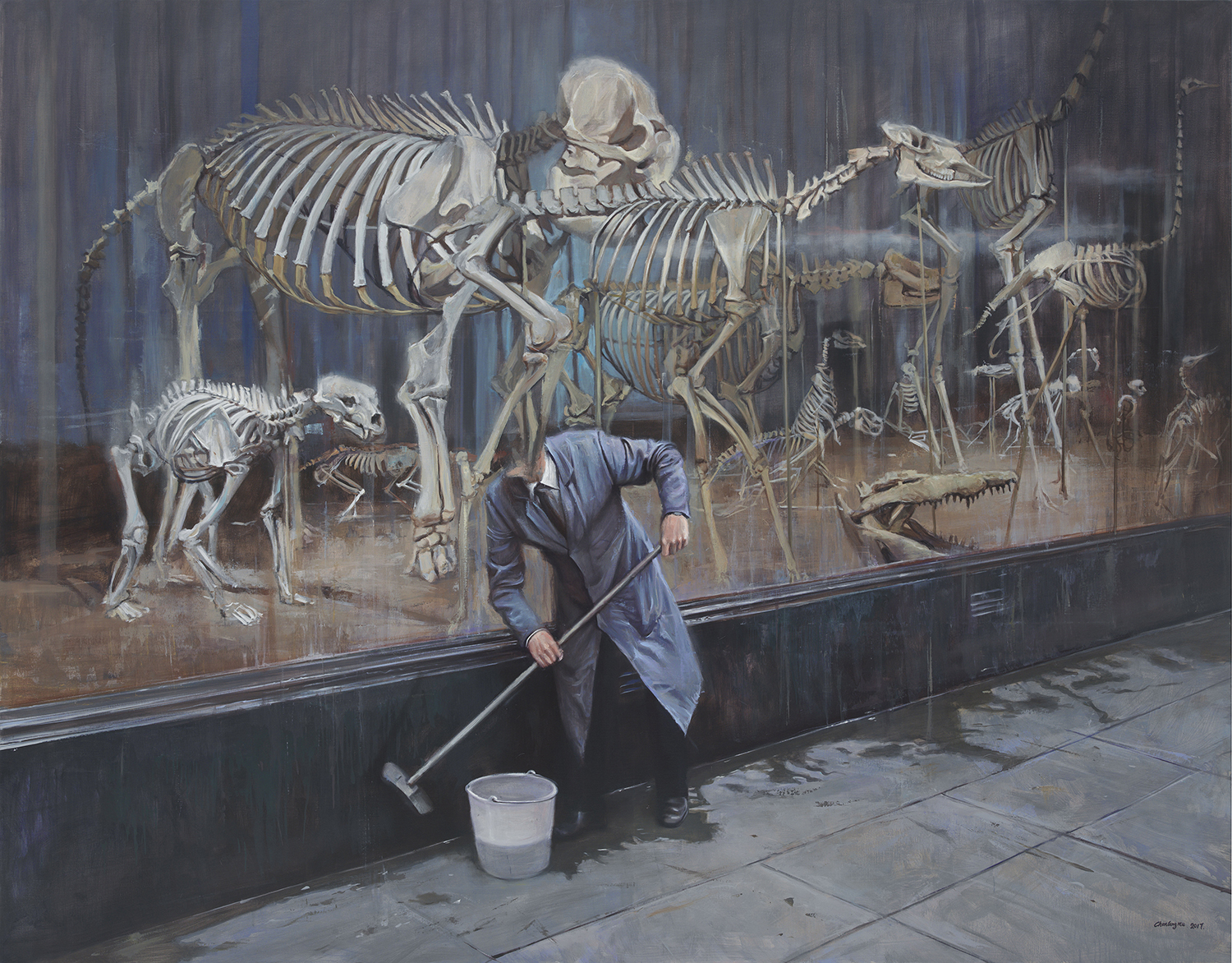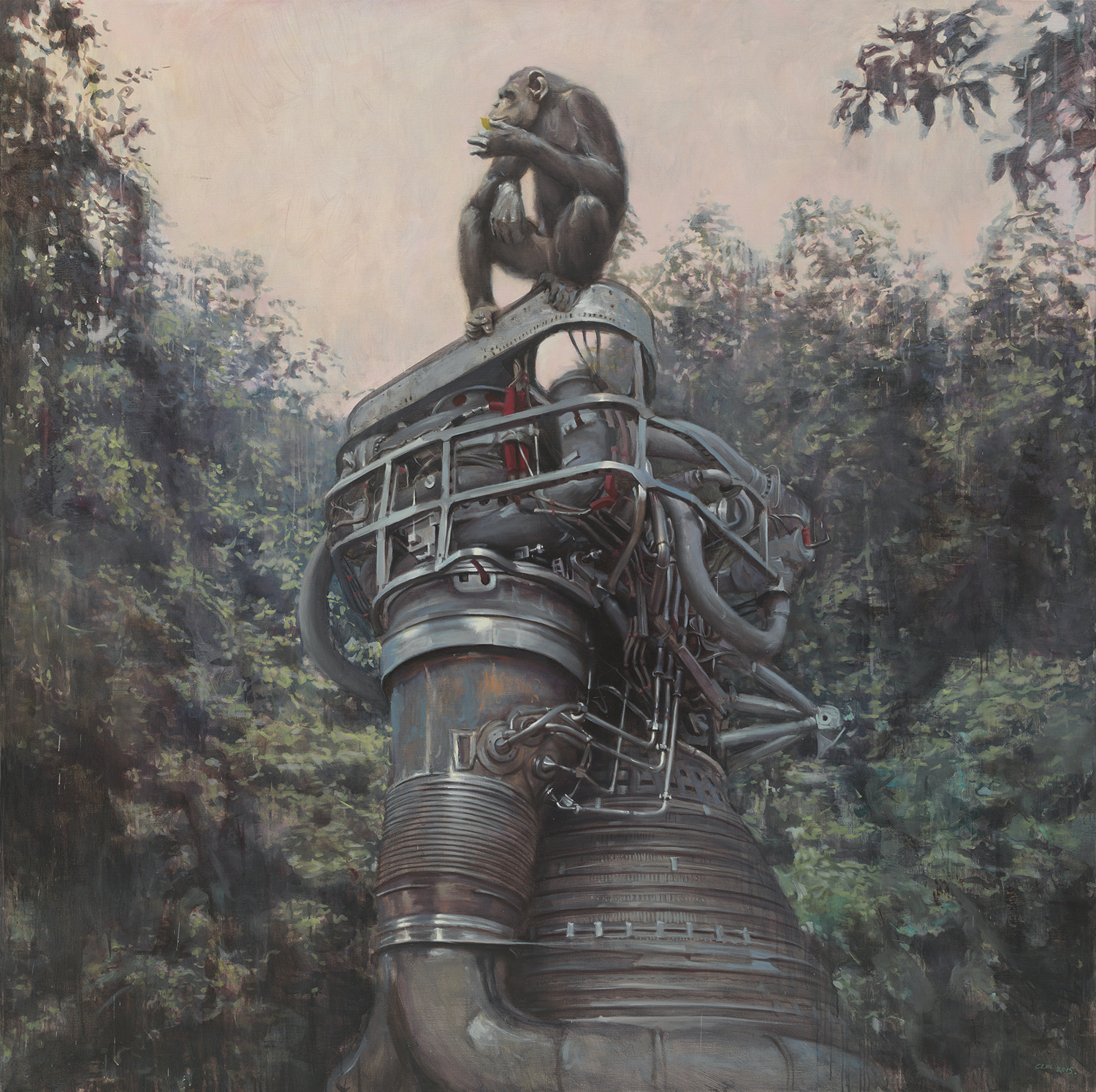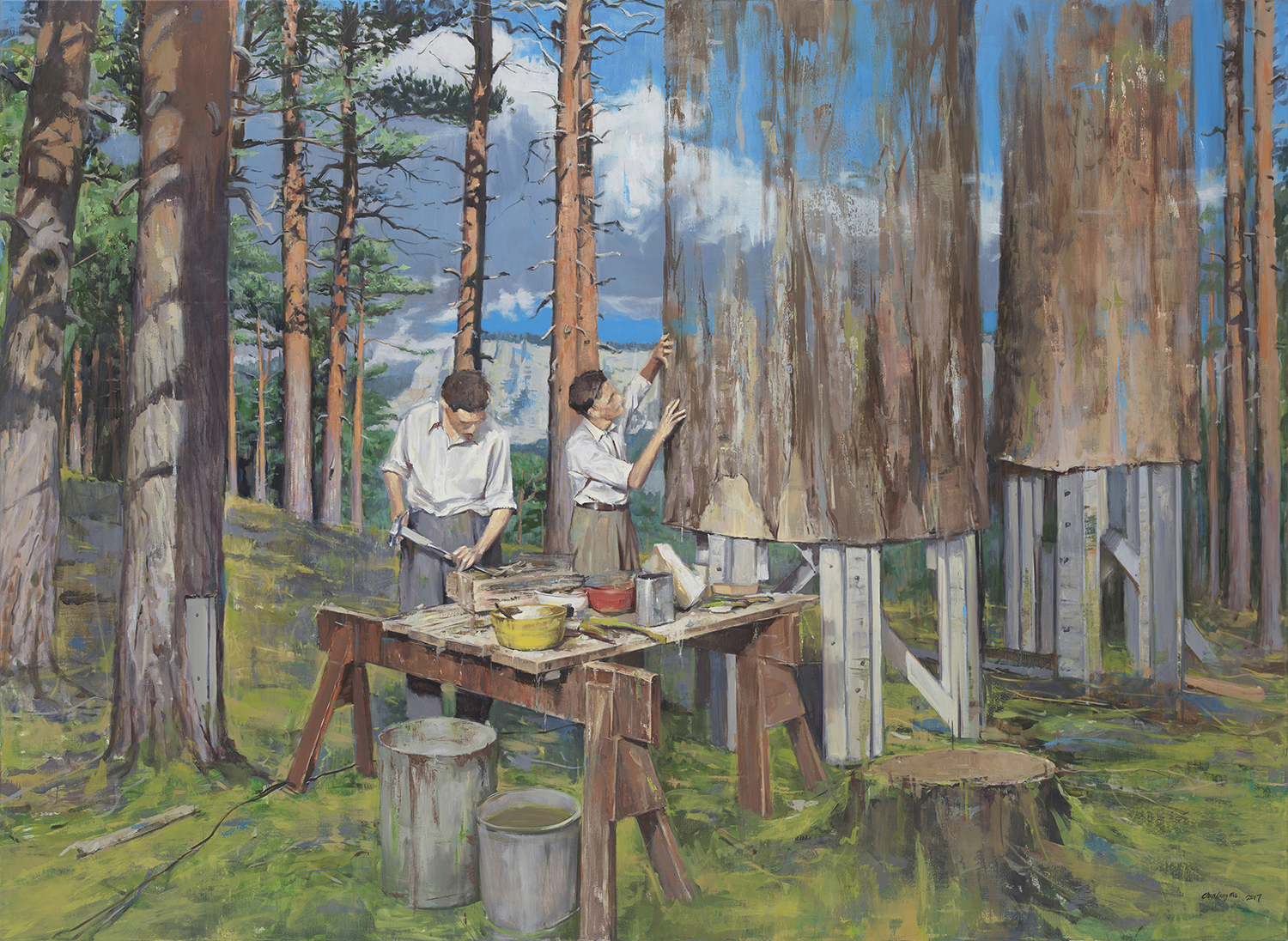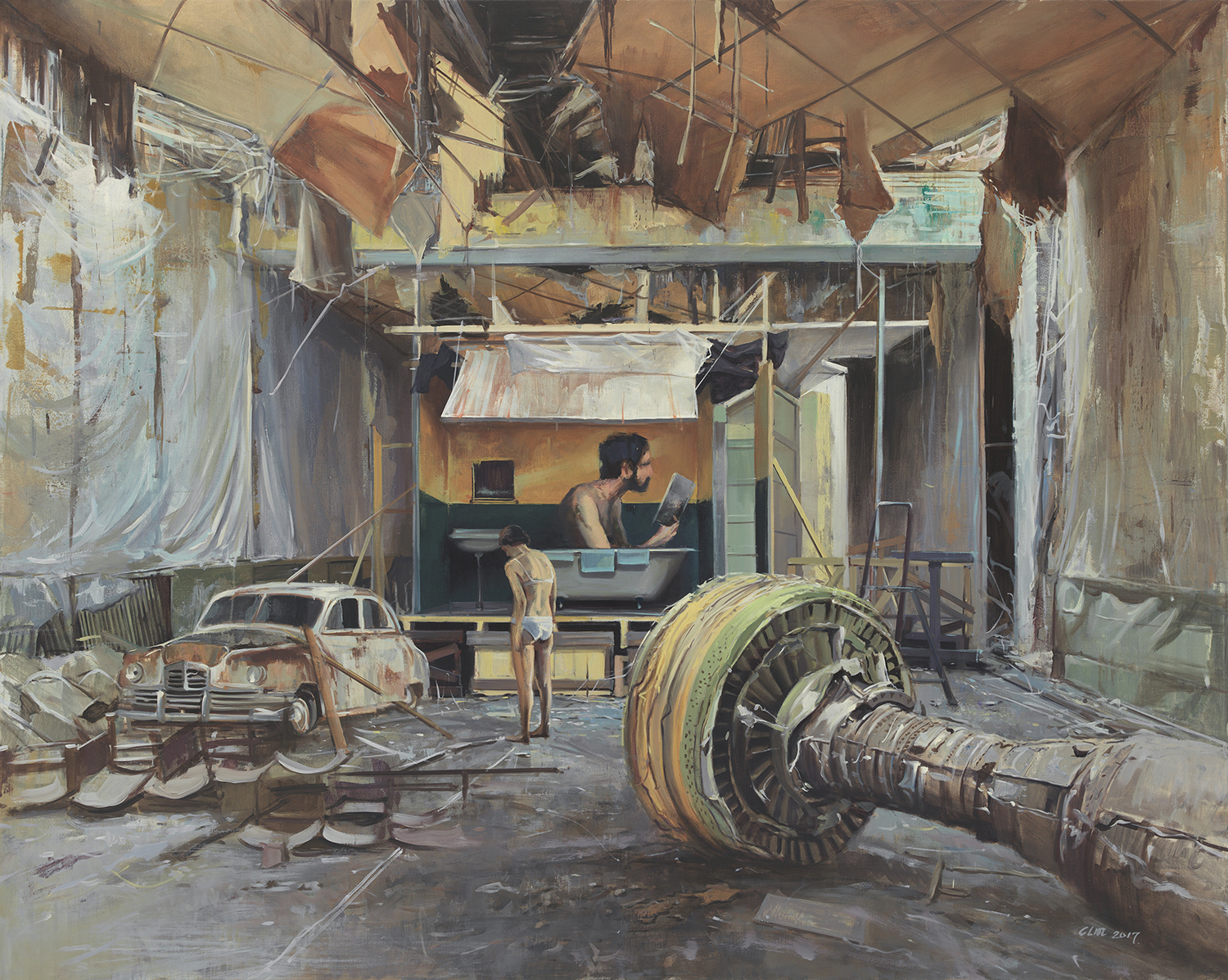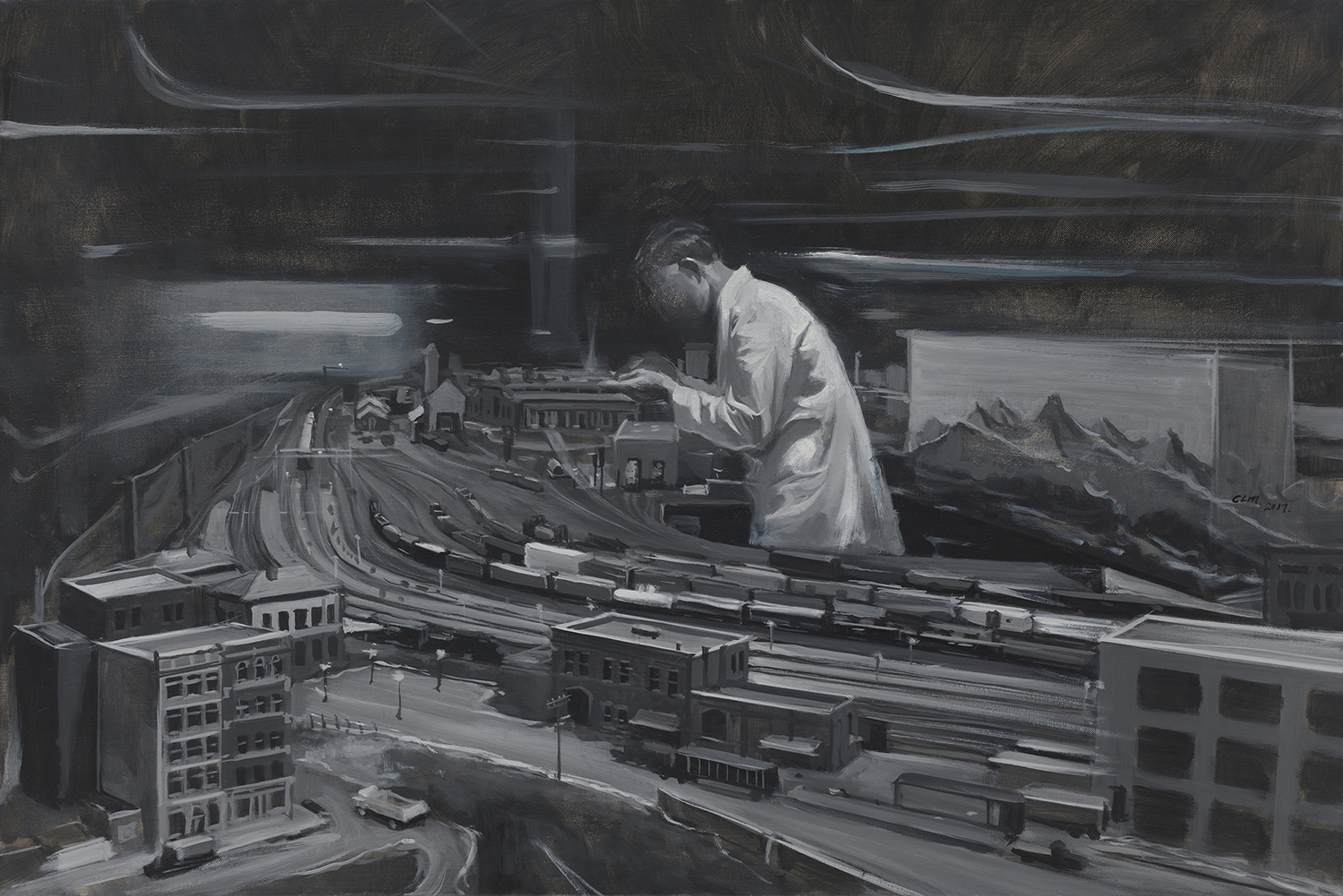- 资质:诚 艺
- 评分:
1分 2分 3分 4分 5分 6分 7分 8分 9分 10分 8.4分
- 印象:
- 经营时间:16年
- 展厅面积:
- 地 区:北京-朝阳
世界:陈朗慕个展
- 展览时间:2017-10-22 - 2017-11-30
- 展览城市:北京-朝阳
- 展览地点:北京市酒仙桥路4号798艺术区E06
- 策 展 人:杨鉴
- 参展人员:
展览介绍
世界:陈朗慕个展
Universal:Chen Langmu Solo Exhibition
新闻稿
Press Release
艺术家| Artist:陈朗慕 | Chen Langmu
策展人|Curator:杨鉴 | Yang Jian
开幕时间 | Opening:2017.10.22 16:00
展览时间 | Exhibition Dates:10.22 - 11.30.2017
地点|Venue:
蜂巢(北京)当代艺术中心| Hive Center for Contemporary Art (Beijing)
地址|Add.
北京市酒仙桥路4号798艺术区E06 |
E06, 798 Art Distrct, Chaoyang Distrct, Beijing, China
蜂巢(北京)当代艺术中心将于2017年10月22日至11月30日,在B、C展厅推出青年艺术家陈朗慕“世界”个展。展览由蜂巢青年策展人杨鉴策划。继2014年“荒原”个展、2015年“黑铁时代”个展之后,“世界”将呈现陈朗慕的最新创作,他在绘画中建筑了自治的时空,并将个人对记忆与时间的体验与之相融,就此划分和框定了其主体观认知的“世界”,而其间时空的交叠感既有着对当下的焦虑又隐含着对未来的预期。
陈朗慕在摄影和历史图片中寻找那些带有特定时刻及时间变迁性质的部分为素材,对艺术家而言,这些历史证据似乎提供了某种可能性,画布成为艺术家个体和过往相互敞开的场所。陈朗慕成长于衰退中的中国东北工业基地,或许与此有关,他察觉到寻找一个集体性的根源让自己更清楚地辨识个体,在这个前提下,通过绘画这种个人化的方式将资源整理、安排到画面构成中,成为一种叙述、参与和占有的方式,是艺术家个人对于当下作为历史话语的一次主动生产,也是艺术家利用历史作为切口所进行的主体性创造。
陈朗慕绘画中的人物通常被过滤掉具体的身份和特征,有时人物甚至被抹去或遮蔽面部,而仅强调他们的肢体语言和表达,通过这种方式,艺术家成功地将观众引入了一个在宏大的虚构历史时空中观察真实人类共性的收看方式,从而使其绘画的舒适区域得以成立。
比照早期作品中对历史性图像的篡改和编辑,陈朗慕近期的工作显得更加精确和具有创造野心。与夺人眼球的改造方式保持距离,陈朗慕的绘画始终携带平静的神秘感与不和谐的安宁。新作中,陈朗慕在作品当中并置了复杂的透视、光源、空间关系以及带有不同时空特征的交叠影像,如同剪辑中“闪回”效果在同一二维场景中的跨时空叠加,构成一种可视的虚无。而在一些作品的限定区域,陈朗慕采取了极其主观的用色和打破原本个人绘画惯性的笔触,区域性的形成一种类似于“塑料”般的视觉质感,让个别区域在画面当中悬浮,突出了荒诞感。借助绘画语言本身无可取代的视觉表述能力和煽动性,陈朗慕将他的历史观、时空观和对于绘画传达可能性的最新理解统筹于整体画面的视觉平衡和沉着冷静的绘画基调当中,这或许也是涉及历史题材时的一种明智的观察距离。
Hive Center for Contemporary Art (Beijing) is pleased to announce the opening of Chen Langmu: Universal on 22nd Oct., 2017, at Hall B&C, The exhibition is curated by Yang Jian and will last until 30th Nov., 2017. After his solo exhibitions Wasteland (2014) and The Iron Age (2015), Chen Langmu will show his new works of the recent years.
With photography and historic pictures, Chen Langmu collects imageries of historic statuses at particular moments and evolutionary processes over certain historic periods. Such historic evidence provides him with some possibilities to construct fields where the artist and the past become mutually open. For the artist grew up in the declining industrial base of North East China, his collection of evidence represents a search for the collective root for himself. This search will help Chen Langmu locate more precisely his own individuality (within such historic context) before organizing and conveying it in the pictorial composition through such personalized treatment as painting, thereby creating his unique visual fruits or in fact forming a method of narrating, participating and occupying. This is in effect his active construction of the present as historic discourse and creation of his own individuality by using history as an entry point.
Compared with alteration and editing of historic pictures in his earlier works, his recent works are apparently more accurate and ambitious. As always, Langmu distances himself from radical, subversive and eye-catching reformation, thereby maintaining his consistency in conveying the sense of peaceful mystery and disharmonious tranquility. At this stage, Langmu injects into his works a chaotic mixture of perspectives, sources of light, spaces along with overlapping images of different time-space, creating visual effects resembling that of “flashback” in video editing juxtaposed in the same two-dimensional scenarios. Meanwhile, the artist also introduces into his two-dimensional scenes some trans-space-time overlaps, generating certain visible void and nothingness. More fascinating is that some limited areas of his works feature his extremely subjective use of coloring and brushwork that breaks his own artistic inertia, giving rise to some sort of plastics-like visual texture in those areas. As a result, those specific areas of Chen Langmu’s works appear to be suspending or convey certain sense of absurdity without jeopardizing the visual equilibrium and harmony of the whole work. In other words, Chen Langmu’s experimentation as such does not deviate from his overall tone of calmness and composure in painting. Dependent on his painting language of the irreplaceable visual expressiveness and provocativity, the artist effectively conveys his conception of history and space time as well as his latest interpretation of painting’s expressive potentials, which may also help maintain a sensible observational distance when exploring historic subjects.
Works displayed in this exhibition indicates Langmu’s deepened understanding of his apparently conservative or pro-classics figurative approach to painting, compared with his previous comprehension demonstrated in past exhibitions and projects. Such approach to painting is actually an attempt to wipe out or weaken its connections with the painting context permeated with external fashions or dramatic changes. Well-seasoned and mature approach as such turns the forms of painting into the content itself where narration takes shape; in other words, the content of the painting takes on certain ritualized or canonized visual features. However, as no language of painting is in itself neutral, such apparently conventional approach to painting, if observed in the future space-time, may reveal its exceptional independence and accuracy in expressing the views of the painter. It is also this approach to painting that sets Chen Langmu apart from his peers within the current space-time.

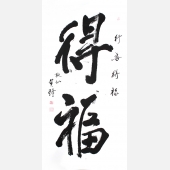 黄琦
黄琦 武中奇
武中奇 测试用艺术
测试用艺术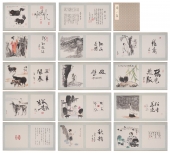 尼玛泽仁
尼玛泽仁